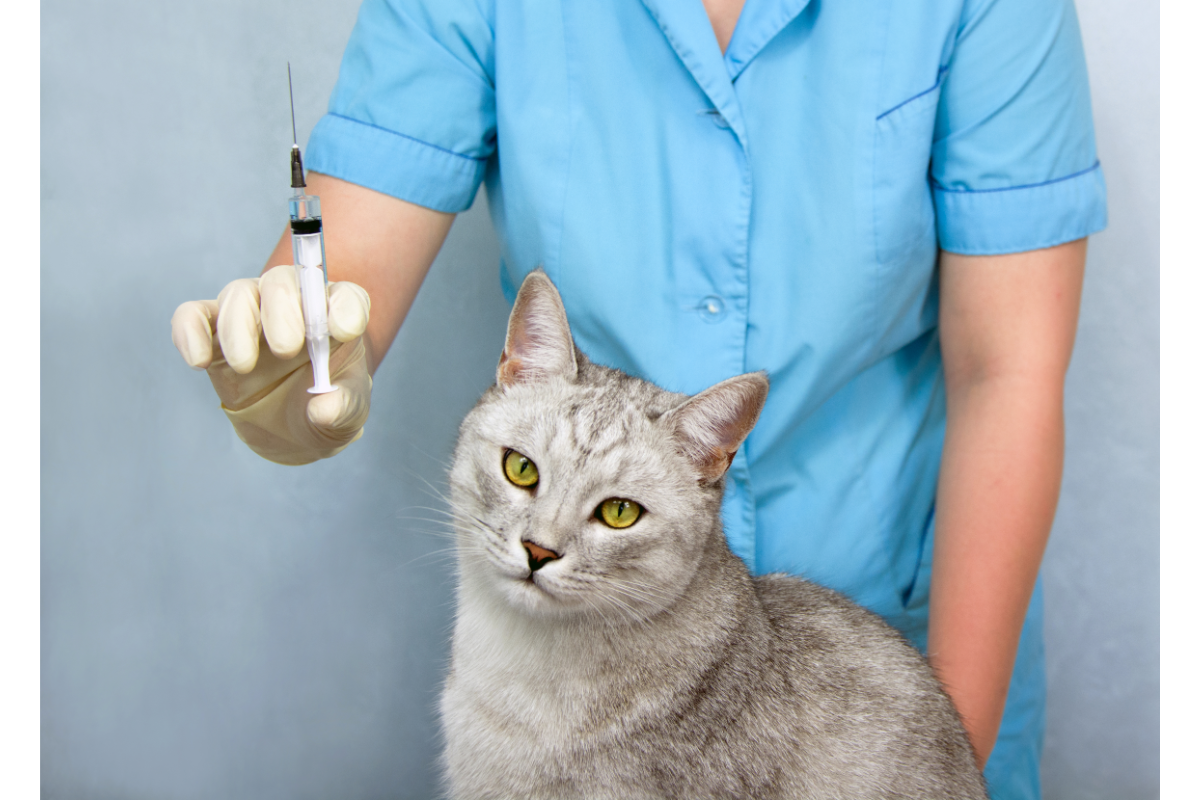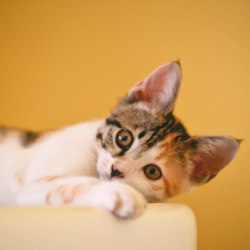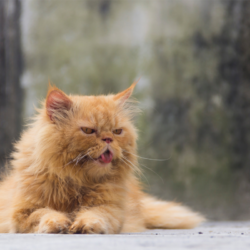Diabetes mellitus is one of the most common endocrine diseases in cats, mainly affecting middle-aged to older felines. With its prevalence increasing over the last thirty years, it is crucial for cat owners to understand this disease in order to better prevent and manage it. This article will guide you through the key aspects of diabetes in cats, including its causes, symptoms, diagnosis, treatment and prevention.
What causes diabetes in cats?
Diabetes mellitus is one of the two most common endocrine disorders in cats. The prevalence of this condition has increased over the last thirty years. Current estimates of the prevalence of feline diabetes mellitus vary between 0.25 and 1%, depending on the study.
It is estimated that 80% to 95% of diabetic cats suffer from a form of diabetes similar to type 2 diabetes mellitus in humans, in terms of pathophysiology, risk factors and therapeutic strategies. Type 1 diabetes mellitus in cats appears to be extremely rare.
Type 2 diabetes is a heterogeneous disease resulting from pancreatic β-cell dysfunction and insulin resistance. Both environmental and genetic factors contribute to the development of this disease. Research has not yet clearly identified genetic factors in cats. However, studies show a higher prevalence of diabetes in Burmese cats compared with European cats.
Other risk factors identified include age (over seven years), male sex, castration, physical inactivity,administration of corticoids or progestins, and obesity. Indeed, the increase in the prevalence of diabetes in cats could be directly correlated with the increase in obesity in this species.
Obese cats are 3.9 times more likely to develop diabetes than those of optimal weight. Β-cell dysfunction leading to glucose intolerance must exist for diabetes mellitus to develop.
What are the symptoms of diabetes in cats?
The majority of diabetic cats present the classic clinical signs of diabetes. These include polyuro-polydipsia (77%), weight loss (68%), polyphagia (23%) and depression (20%). Around 10% of cats show visible signs of diabetic neuropathy. This is manifested by weakness of the hind legs, an inability to jump, plantigrady and muscle atrophy. In the presence of a concomitant condition, other clinical signs may be present. If the diabetes is acid ketoacidosis, the animal is lethargic, anorexic and vomits.
The symptoms that should attract your attention are: increased thirst, increased hunger, increased urine production, and “sticky” urine because it is rich in sugar. Serious symptoms can occur: loss of appetite, dehydration, abnormal and slow breathing, vomiting, coma. The cat is then in diabetic ketoacidosis.
In the medium to long term, other symptoms may appear, such as repeated urinary tract infections (cystitis) and plantigradia. However, not all these symptoms are necessarily present and none is specific to diabetes mellitus. Diagnosis is therefore largely based on additional tests.
A diabetic cat may urinate a lot because of the elimination of glucose in the urine, causing polyuria. It may also drink a lot to compensate for dehydration, which is called polydipsia. You may see him drinking from taps, in the toilet or lapping up water from a flower pot. A diabetic cat may also lose weight despite a normal or increased diet (polyphagia). The coat may become dull and greasy, and the cat may show muscle weakness and locomotor problems, such as walking ‘on its heels’.
How is the disease diagnosed?
The diagnosis of diabetes in cats is based on the presence of suggestive clinical signs and persistent hyperglycaemia associated with glycosuria. Stress hyperglycaemia must be ruled out before treatment is started. The serum fructosamine assay reflects the previous week’s blood glucose levels, without the influence of stress hyperglycaemia. Use this assay to confirm a diagnosis of diabetes mellitus, although it may show normal values in recent diabetes.
It is vital to look for intercurrent conditions and complications, as these can worsen insulin resistance and compromise the effectiveness of treatment. A blood count, biochemistry, urinalysis and urine culture are all necessary at the first consultation.
Various tests, including blood and urine tests, confirm the suspicion of diabetes mellitus. Hyperglycaemia alone is not enough to diagnose diabetes, and an abdominal ultrasound may be recommended to explore the pancreas.
Diagnosis of diabetes involves demonstrating persistent hyperglycaemia and the presence of sugar in the urine, often accompanied by increased blood lipid levels. Cats can have high blood sugar levels under stress, so a single blood sample is not enough to make a diagnosis. Often, a fructosamine assay complements the blood test to assess short-term glycaemic control. Tests to detect acromegaly, Cushing’s disease or immunoreactive pancreatic lipase (IPL) are also necessary, as these diseases can induce insulin resistance and lead to diabetes.
What treatments are available?
Once a diabetic cat has been diagnosed, prompt treatment should be initiated to maximise the chances of remission. Eliminate the clinical signs observed by owners to improve the animal’s general condition: normalise appetite, preserve muscle mass, encourage weight regain and eliminate polyuro-polydipsia.
Clinical signs disappear when blood glucose levels fall below the renal reabsorption threshold. A diabetic cat may present moderate hyperglycaemia without clinical signs. The aim is therefore to maintain blood glucose levels between 4 and 10 mmol/L (0.72 to 1.8 g/l) throughout the day.
Treatment is also aimed at avoiding complications of diabetes or treatment, such as hypoglycaemia induced by insulin injections. Hypoglycaemia is characterised by a blood glucose level of less than 3.0 – 3.5 mmol/L (0.54 – 0.63 g/l). Although well tolerated by the animal, severe hypoglycaemia can be fatal.
A new objective is to achieve diabetic remission, defined by an absence of symptoms and normalisation of blood glucose levels with interruption of insulin therapy for at least 2 to 4 weeks.
Treatment is based on a combination of diet and medication. The aim of the diet is to limit fluctuations in blood sugar levels, maintain a normal weight and limit complications. Carbohydrate intake must be controlled and energy intake adjusted.
Medical treatment is mainly based on insulin injections. Several types of insulin can be used depending on the case, with periods of hospitalisation necessary to adjust insulin therapy. Response to treatment is generally satisfactory, but regular monitoring is necessary. Early detection and treatment may lead to remission without insulin injections. In gemmotherapy, walnut helps to regulate blood sugar levels. It is therefore of interest as a background treatment.
What are the means of prevention?
There is no real method of preventing cat diabetes. It’s mainly a question of lifestyle habits:
- stimulating your cat to play regularly
- giving your cat a good-quality diet with the lowest possible carbohydrate content (especially in cats predisposed to developing diabetes sooner or later),
- avoid giving him leftovers from meals, or even human food in general,
- and lastly, don’t give your cat too many treats.
Diabetes can be prevented by eating well,exercising regularly and maintaining a normal weight from an early age. For diabetic cats detected early, complete remission can be observed. All cats, whatever their age or sex, are susceptible to diabetes, although the disease particularly affects males from the age of 6.
However, certain precautions can help to limit the onset of diabetes, starting with a healthy lifestyle and a suitable diet. It’s essential to stick to the recommended rations for your cat’s activity level and age. You also need to ensure that your cat is physically active. Being overweight is a factor that can encourage diabetes, as it limits the regulatory action of insulin in the blood.
Cats must have constant access to fresh water that is changed frequently, and all human food should be avoided as it contains too much sugar, fat and additives.





